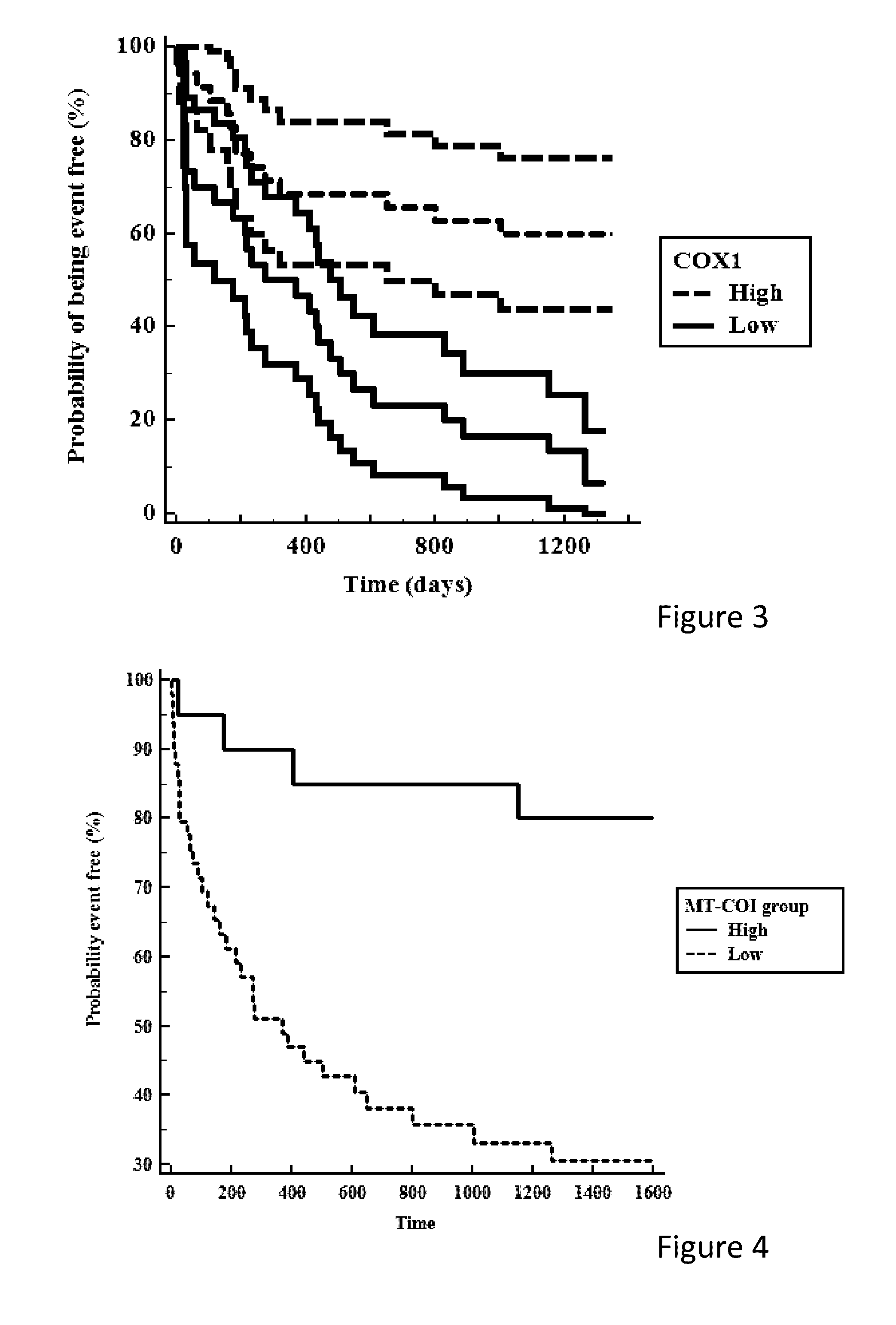Oxidative stress and cardiovascular disease events
a technology of oxidative stress and cardiovascular disease, applied in the field of white blood cell new clusters, can solve the problems of inability to discriminate between patients who develop, inability to predict the risk of cardiovascular disease in the presence of mets alone, and inability to predict the risk of cardiovascular disease in individuals
- Summary
- Abstract
- Description
- Claims
- Application Information
AI Technical Summary
Benefits of technology
Problems solved by technology
Method used
Image
Examples
example 1
RNA Biomarkers Associated with the Occurrence of Cardiovascular Diseases
[0211]First, we tested the reproducibility of RNA analysis in monocytes of healthy individuals. Blood samples were collected from 13 healthy individuals at week 0, week 1 and week 2. Blood monocytes were isolated freshly, and RNA was extracted and RNA expressions were measured by RT-PCR. Mean areas under the curves (AUC) were 0.54 for COX1 and for COX4I1, 0.54 for RUNX2 and 0.52 for TFAM (AUC=0.50) means that there is no evidence that the data obtained with the test distinguish between groups) and for COX4I1.
[0212]Seventy-one of 87 patients were found to have stenosed coronary arteries: 20% with 1 diseased artery, 42% with 2, and 38% with 3 diseased arteries. We refer to them as cases. Sixteen of them had no significant coronary stenosis; we refer to them as controls. Cases were more often male and (ex-) smoker. They were more often treated with anti-hypertensive drugs, in particular beta-blockers, and had highe...
example 2
Expression Analysis in Microvesicles
[0217]Microvesicles were isolated from plasma of 19 patients. RNA was isolated and RT-PCR was performed COX1 and COX4I1 expression was compared in extracts of monocytes and plasma of the same patients. COX1 expression was 0.95±0.29 in monocytes and 0.96±0.63 in microvesicles. P-value in paired t-test was 0.985. AUC was 0.54, indicating very significant overlap of areas (AUC in case of 100% overlap is 0.50). COX4I1 expression was 1.12±0.30 in monocytes and 1.16±0.64 in microvesicles. P-value in paired t-test was 0.780. AUC was 0.52. These data show that microvesicles can be used as a proxy of monocytes. Visualisation of microvesicles using NanoSight (Malvern) showed that antibody-mediated enriched microvesicles predominantly were exosomes.
[0218]Because monocyte-derived microvesicles (e.g., exosomes) can be used to obtain similar or identical RNA expression data as compared with monocytes, miRNAs were isolated from (1) microvesicles isolated from pl...
example 3
Prediction of Future Cardiovascular Events on Basis of RNA and microRNA Markers in Monocytes
[0220]We followed 63 of those 71 CAD patients with coronary stenosis for at least 1 year; mean follow up was 1420 days. Thirty-seven CHD patients had 46 new cardiovascular events: cardiovascular death (n=1), recurrent ischemia / angina (n=35) requiring PCI being PTCA eventually combined with stenting, coronary bypass surgery (n=7), and surgery / stenting of peripheral arteries (n=2). Table 3 shows that characteristics of patients without and with future events were similar. COX1 expressions in monocytes of patients with future events collected at baseline were lower. ROC analysis revealed significant relation between COX1 and future cardiovascular events. OR of cardiovascular events in patients with low COX1 was 9.3 (2.8-31). COX4I1, RUNX2 and TFAM expressions in patients without and with new events were similar, but lower than in patients without stenosis (Table 1). MiR-26a and miR-30b were also...
PUM
| Property | Measurement | Unit |
|---|---|---|
| Time | aaaaa | aaaaa |
| Time | aaaaa | aaaaa |
| Volume | aaaaa | aaaaa |
Abstract
Description
Claims
Application Information
 Login to View More
Login to View More - R&D
- Intellectual Property
- Life Sciences
- Materials
- Tech Scout
- Unparalleled Data Quality
- Higher Quality Content
- 60% Fewer Hallucinations
Browse by: Latest US Patents, China's latest patents, Technical Efficacy Thesaurus, Application Domain, Technology Topic, Popular Technical Reports.
© 2025 PatSnap. All rights reserved.Legal|Privacy policy|Modern Slavery Act Transparency Statement|Sitemap|About US| Contact US: help@patsnap.com



